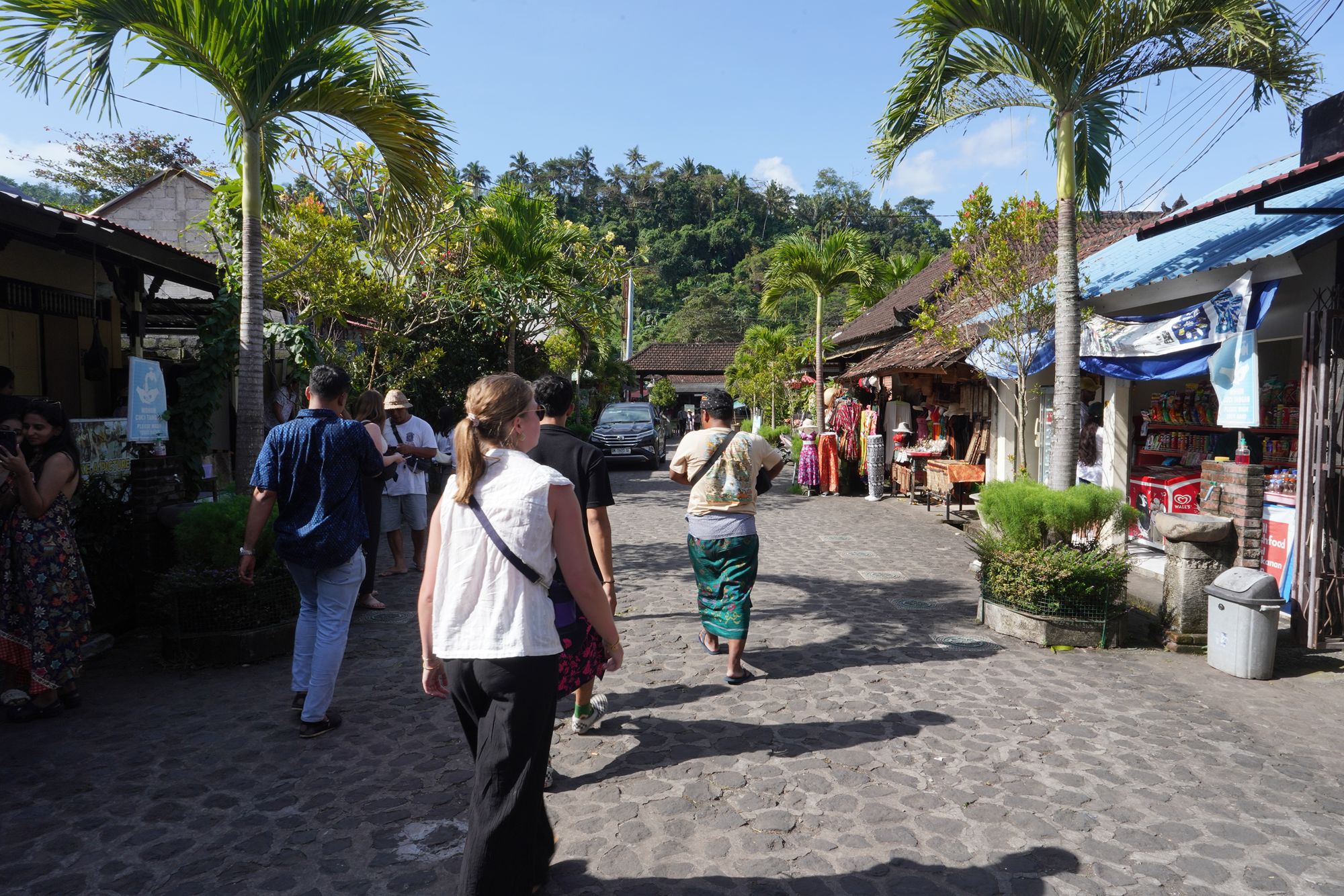Bali: Pura Agung Besakih, Tirta Gangga, and Penataran Agung Lempuyang Temples
A day tour to Eastern Bali Hindu Temples. 944
Pura Agung Besakih: Besakih, Rendang, Karangasem Regency, Bali 80863, Indonesia
Penataran Agung Lempuyang Temple: JJ5J+7HG, Jl. Pura Telaga Mas Lempuyang, Tri Buana, Kec. Abang, Kabupaten Karangasem, Bali 80852, Indonesia
Tirta Gangga Temple: HHQQ+836, Jalan Raya Abang Desa Adat Jl. Raya Tirta Gangga, Ababi, Kec. Abang, Kabupaten Karangasem, Bali 80852, Indonesia
Date Picture Taken: July, 2024
This particular tour included visits to three Northern Hindu Temples.

The first temple visited was Pura Agung Besakih (Besakih Great Temple)

Pura Agung Besakih, also known simply as Besakih Temple, is the largest, most important, and holiest temple in Bali, Indonesia. It is located on the southwestern slopes of Mount Agung, Bali’s highest and most sacred volcano.

Often referred to as the “Mother Temple” of Bali, Pura Besakih is a complex of around 23 separate temples, with Pura Penataran Agung being the central and most prominent one. The temple is deeply intertwined with the spiritual life of the Balinese people and plays a crucial role in the island’s religious ceremonies.
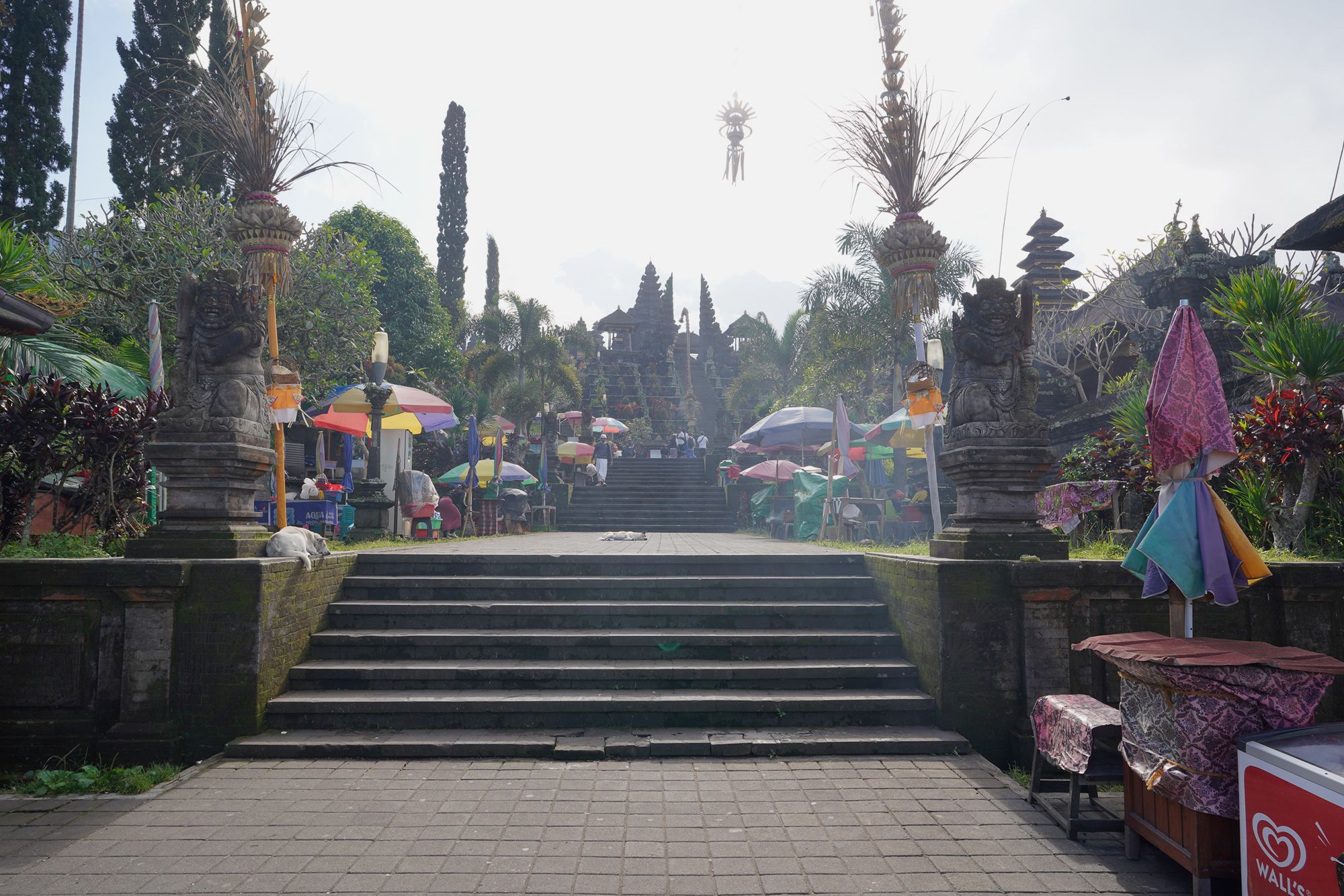
At the center is this long stairs

Pura Besakih is believed to date back to prehistoric times, with its origins going back over 1,000 years. Historical records suggest that it was built around the 10th century, but it likely existed in some form even earlier as a sacred place of worship for ancient animist traditions before the arrival of Hinduism in Bali.
It is said that the temple was first founded by Rsi Markandeya, a Hindu sage who arrived from Java to spread the Hindu Dharma in Bali. According to legend, Rsi Markandeya had a vision instructing him to build a temple on Mount Agung, the tallest and most sacred mountain on the island. Mount Agung is considered the home of the gods, particularly the supreme god Sanghyang Widi Wasa (in his manifestation as Shiva), who watches over the island.

On the right side are these shorter stairs that people go up for worship.
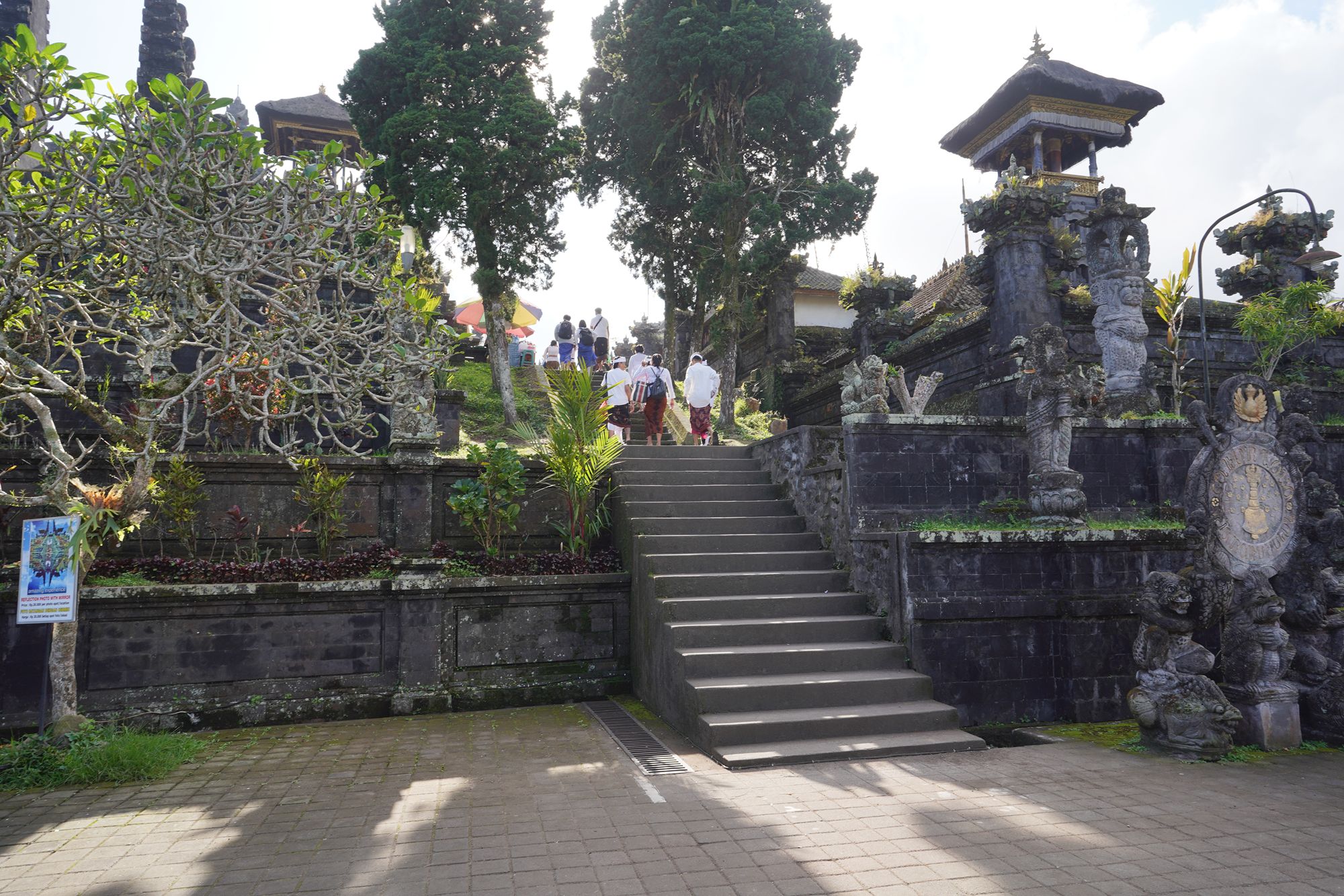
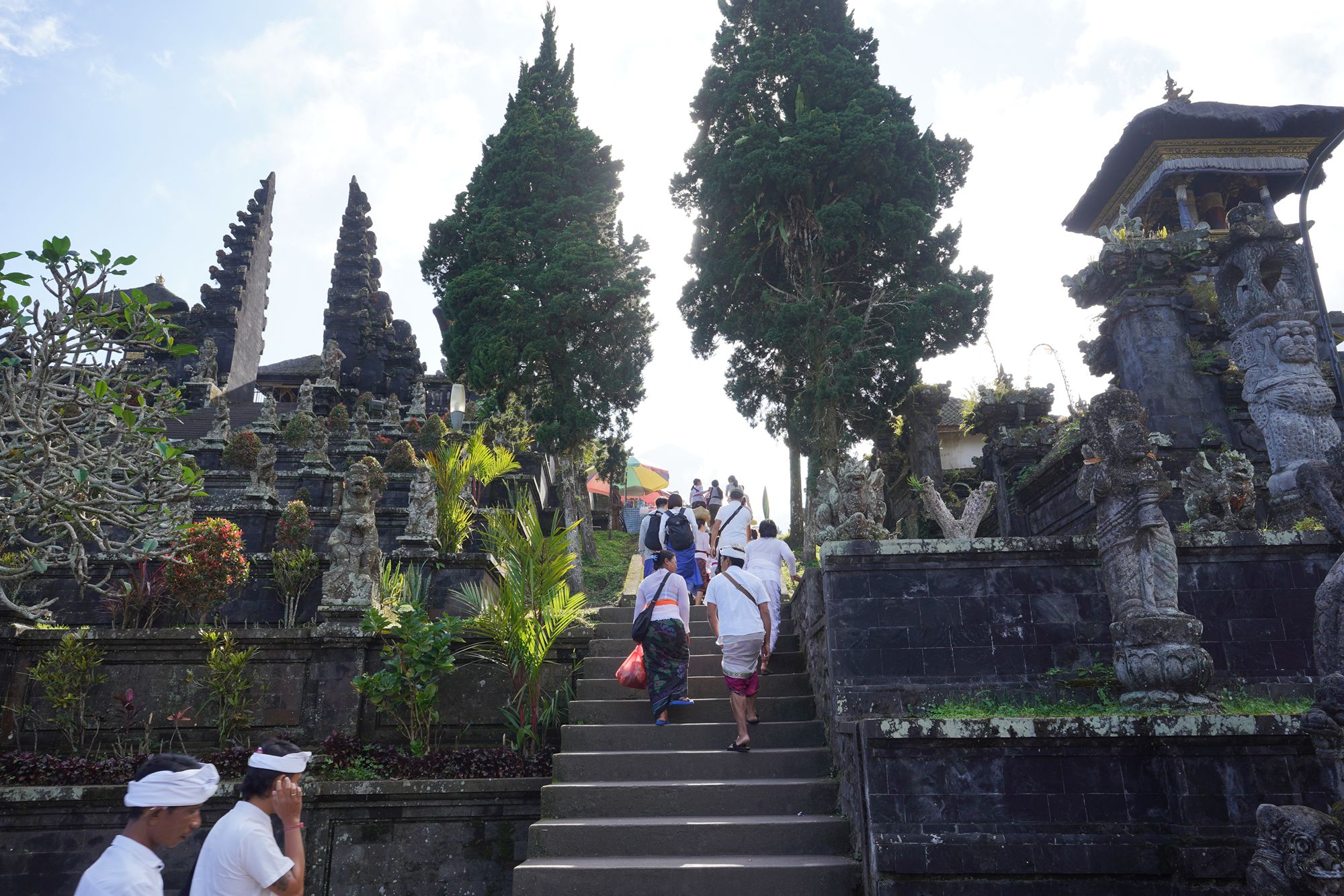
Throughout its history, the temple complex has been expanded and renovated, and today it serves as the most important religious center in Bali for Hindus.
The back side
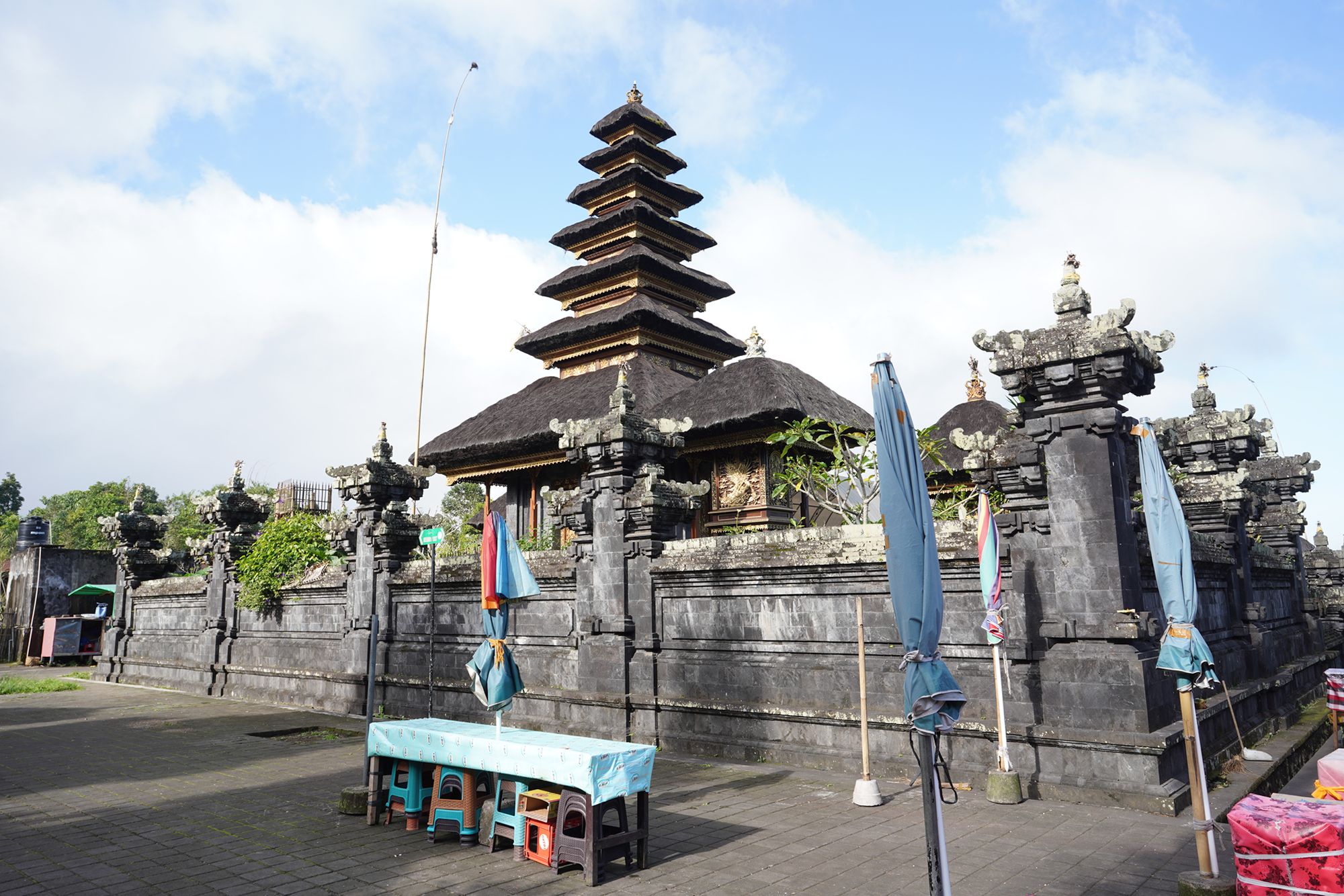
The center stairs again

Besakih Temple is central to Balinese Hinduism and is dedicated to the Trimurti of the Hindu pantheon: Brahma (the creator), Vishnu (the preserver), and Shiva (the destroyer). Each of these deities has its own dedicated shrines within the temple complex.

I climbed this stairs

My left side of the temple from the top of the stairs

This is how it looked inside the gate on the top of the stairs

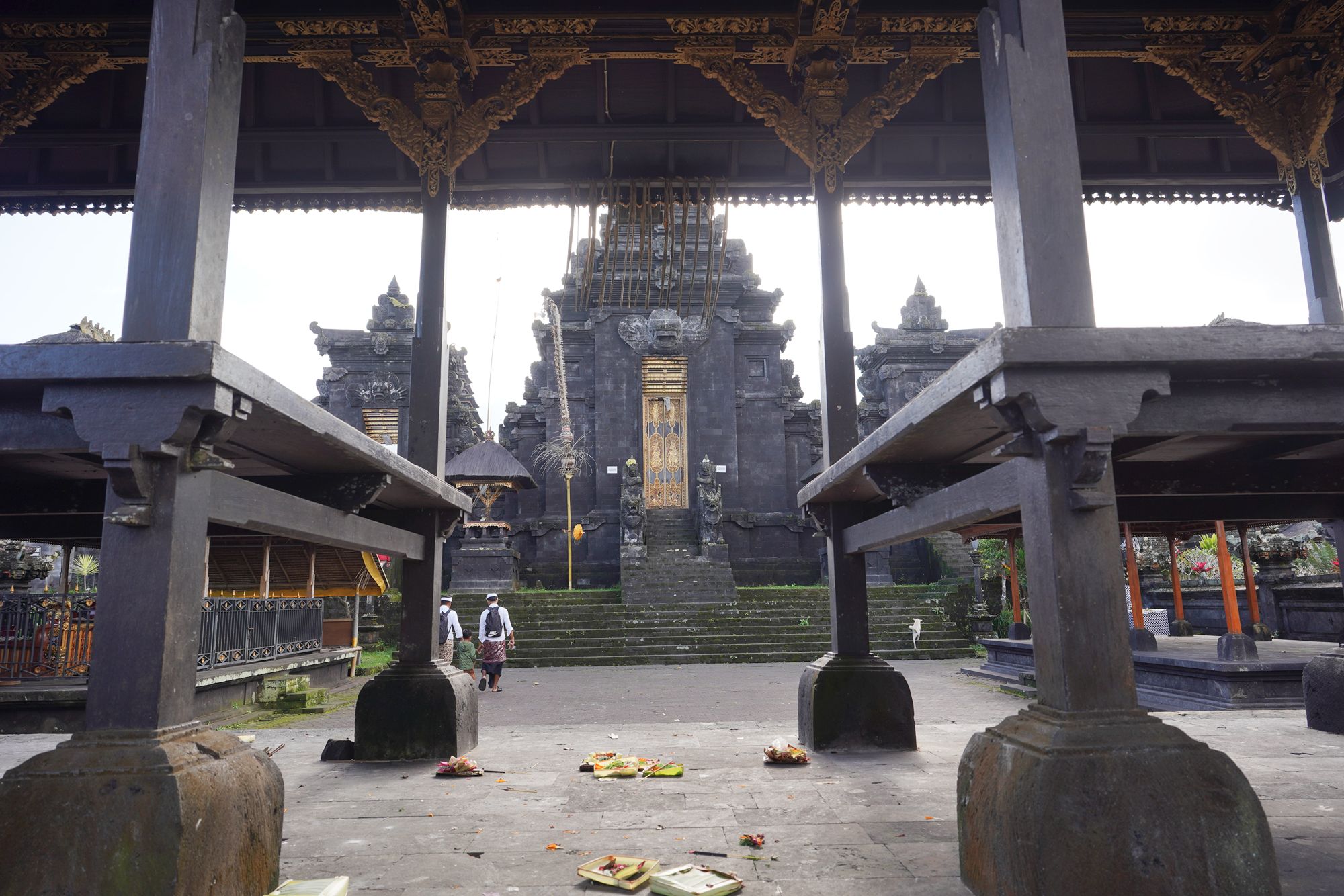

I turned around and looked down from the top of the stairs



Walked down from the stairs

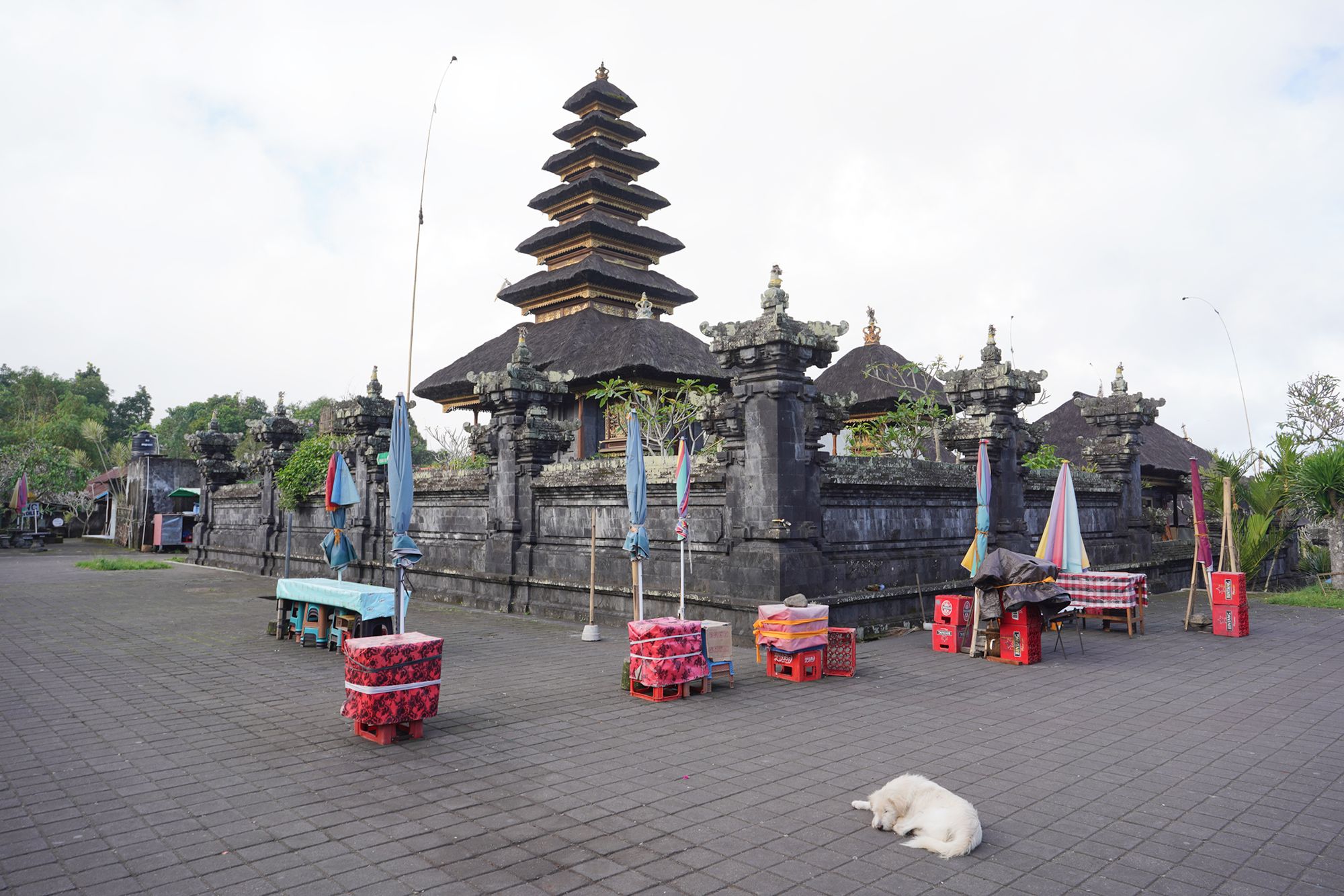
Then went up to the upper side of the temple using the side stairs


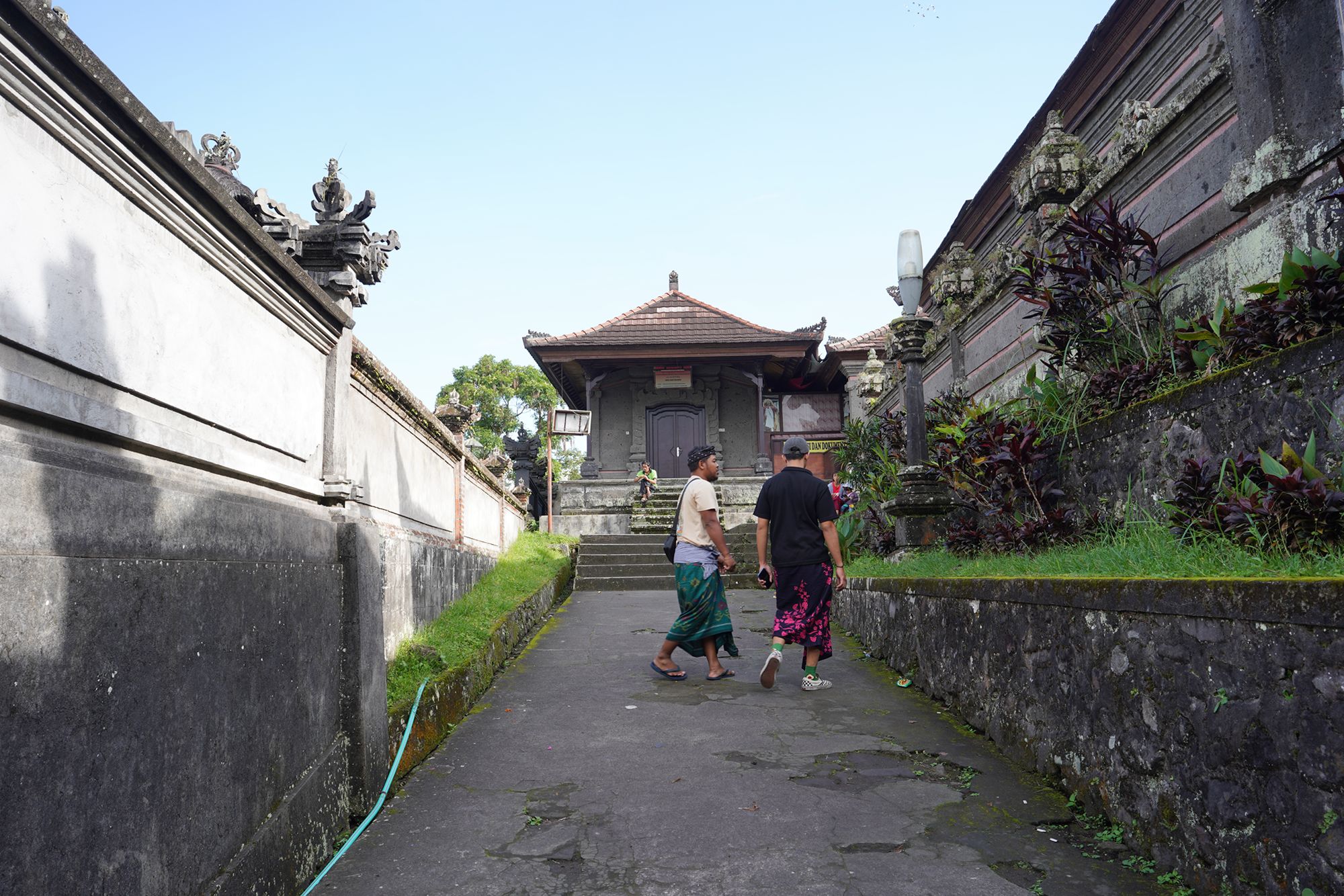
Kept going up

Looked at the buildings inside the wall while going up stairs


More stairs in the direction of the climb

More view of the temple inside the wall
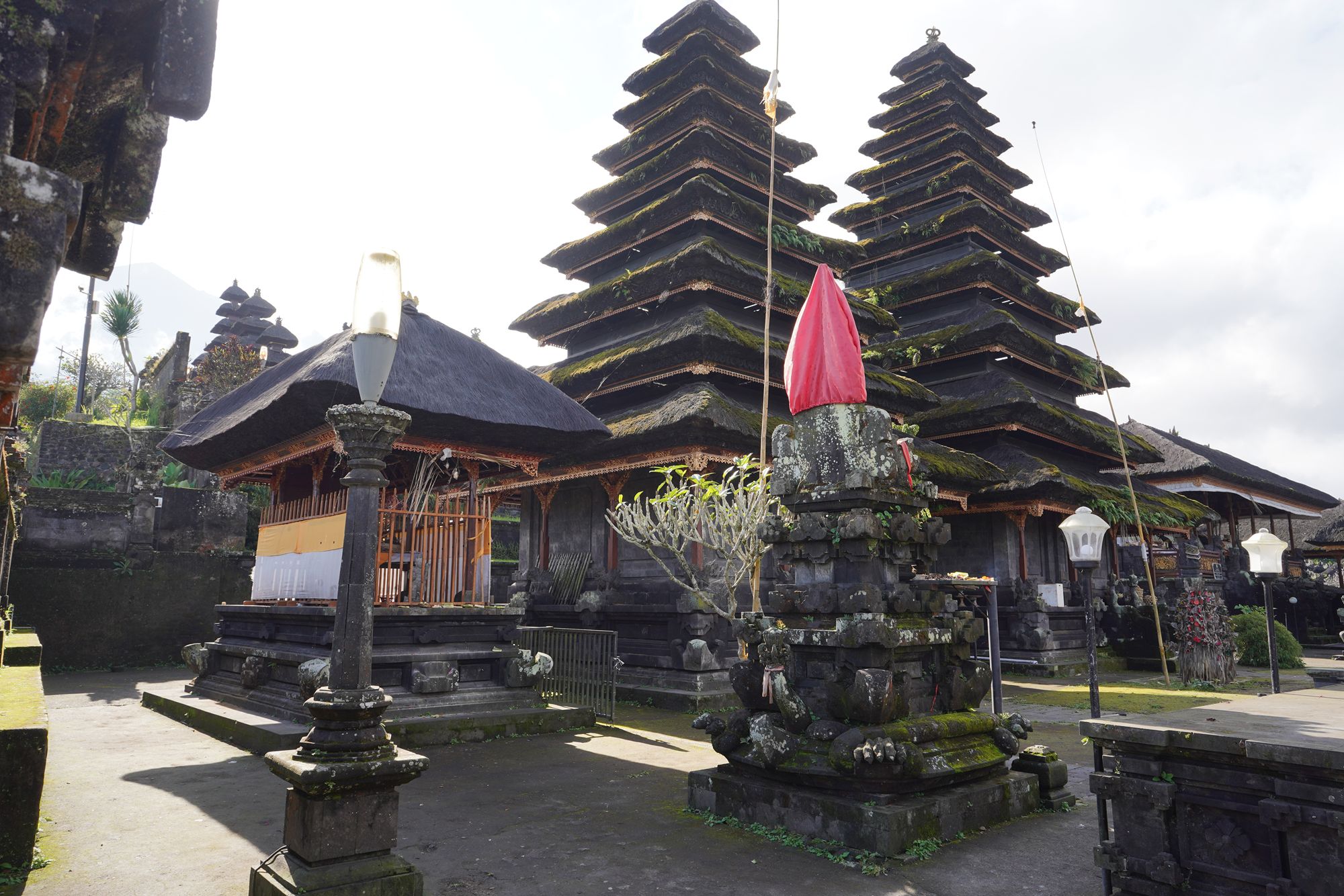
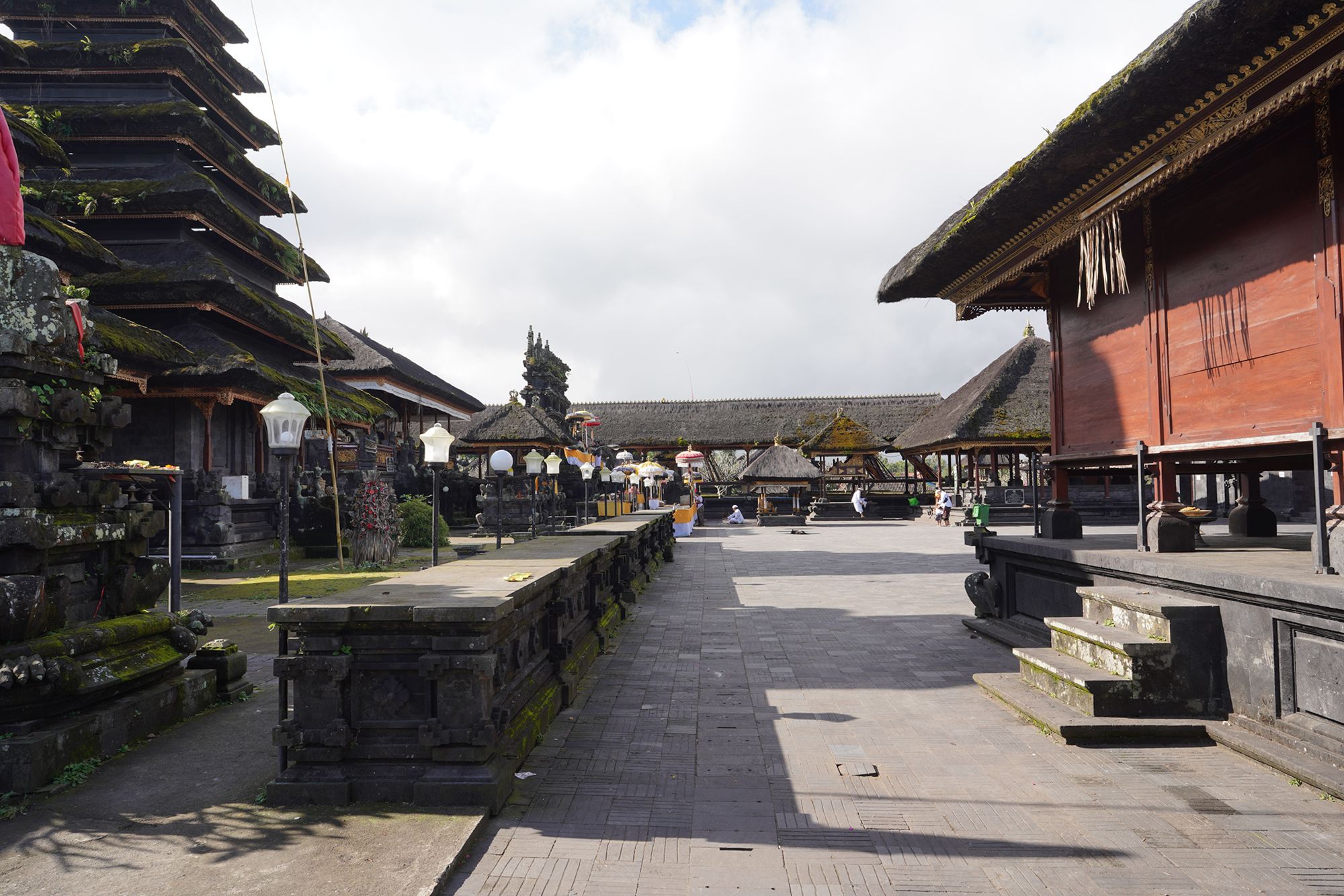

More climbs to the top

and more view of the temple inside the wall




This is the temple’s rear, which is on the higher side of the hill.

View of the temple inside from the rear side and from the hill.




This road goes down the hill where we were in the beginning.
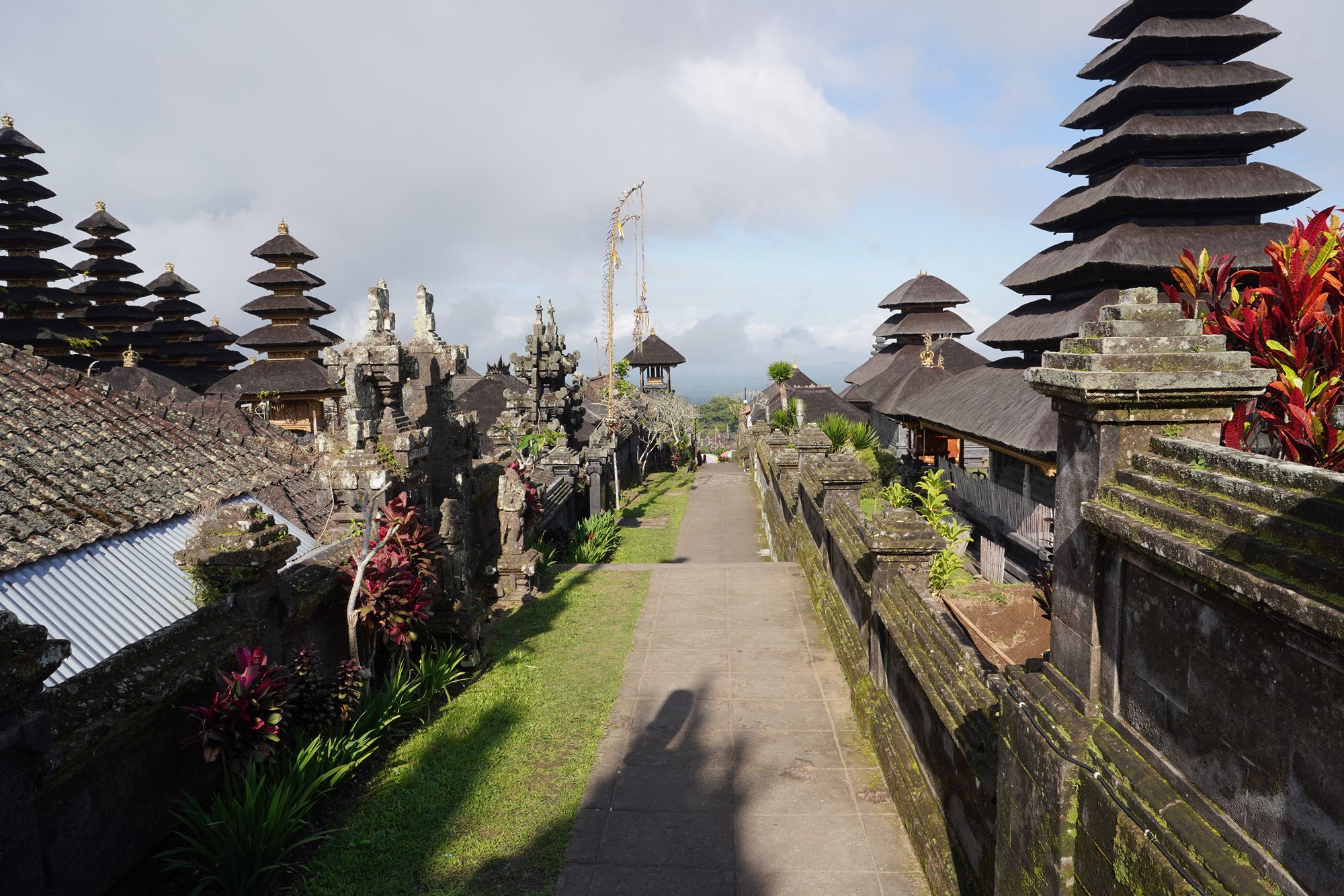
However, we went up more and climbed higher to see another temple.


Walked to the higher place

Back side

The destination of our walk was this temple.


More long stairs

Looked back


View of the temple’s inside from the top of the stairs through the gate



Walked down the stairs

more walked down


Came back to the rear of the first temple visited


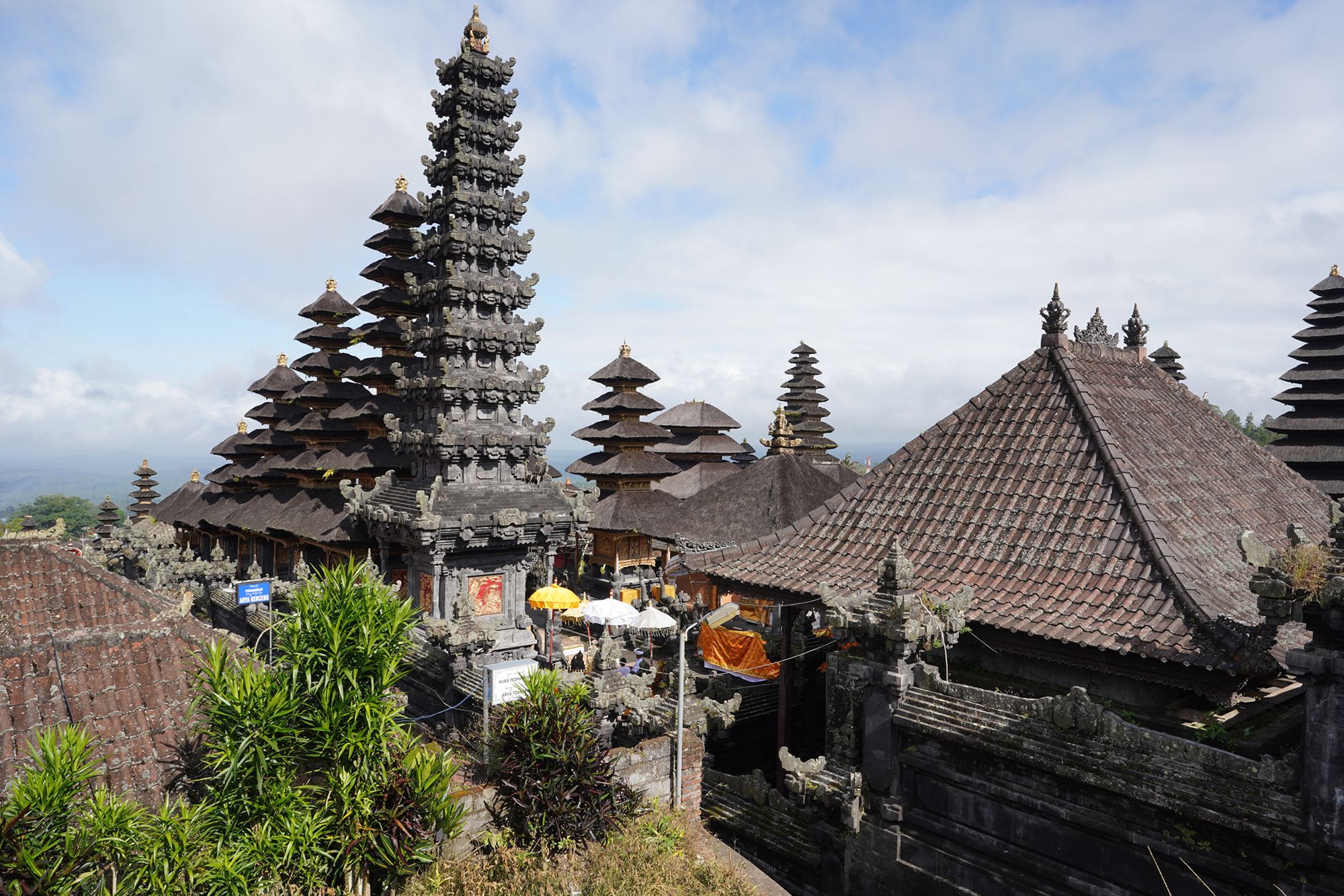
Walked down more


View of the temple inside

Walked down more



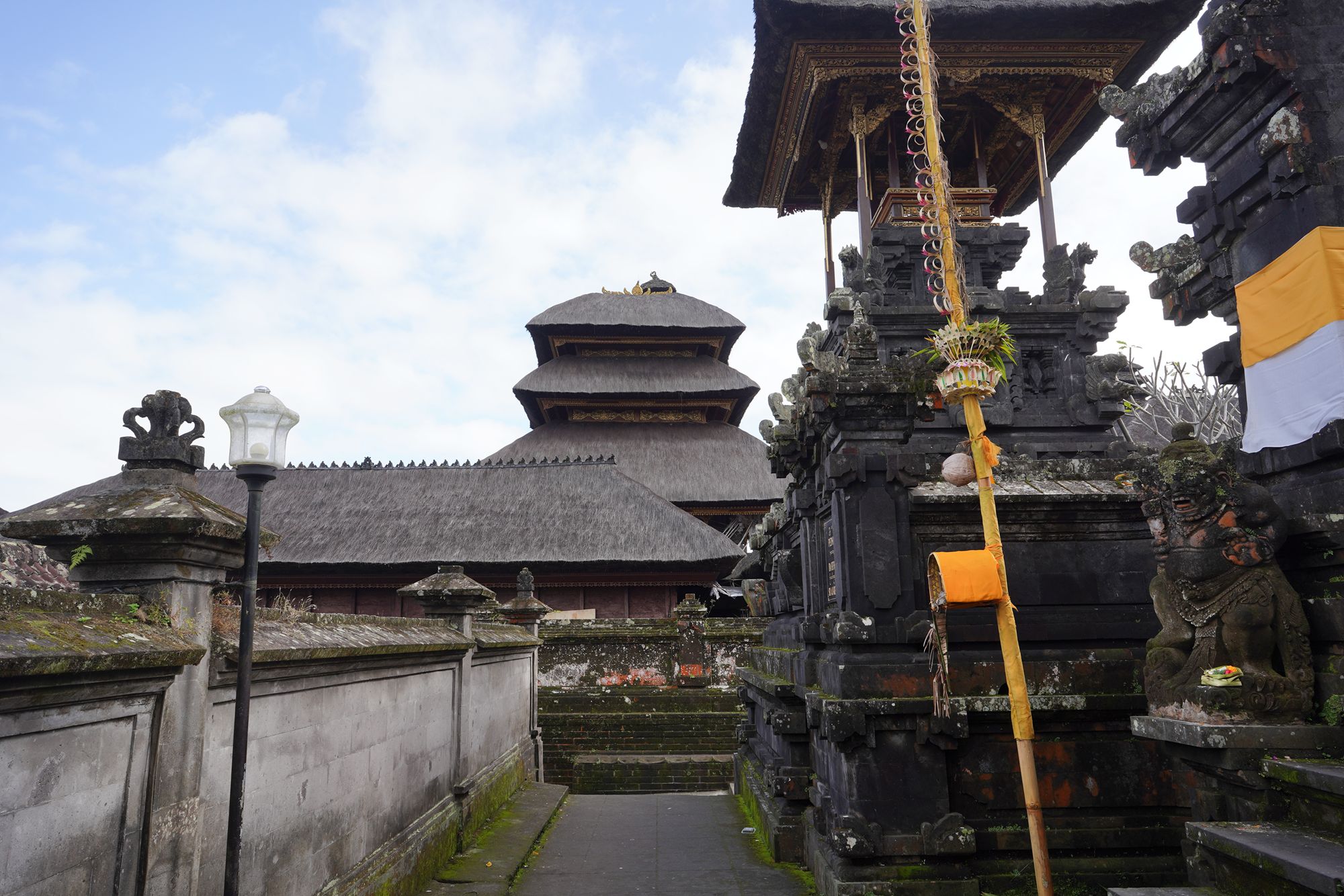

View of the temple’s inside through a door between the wall
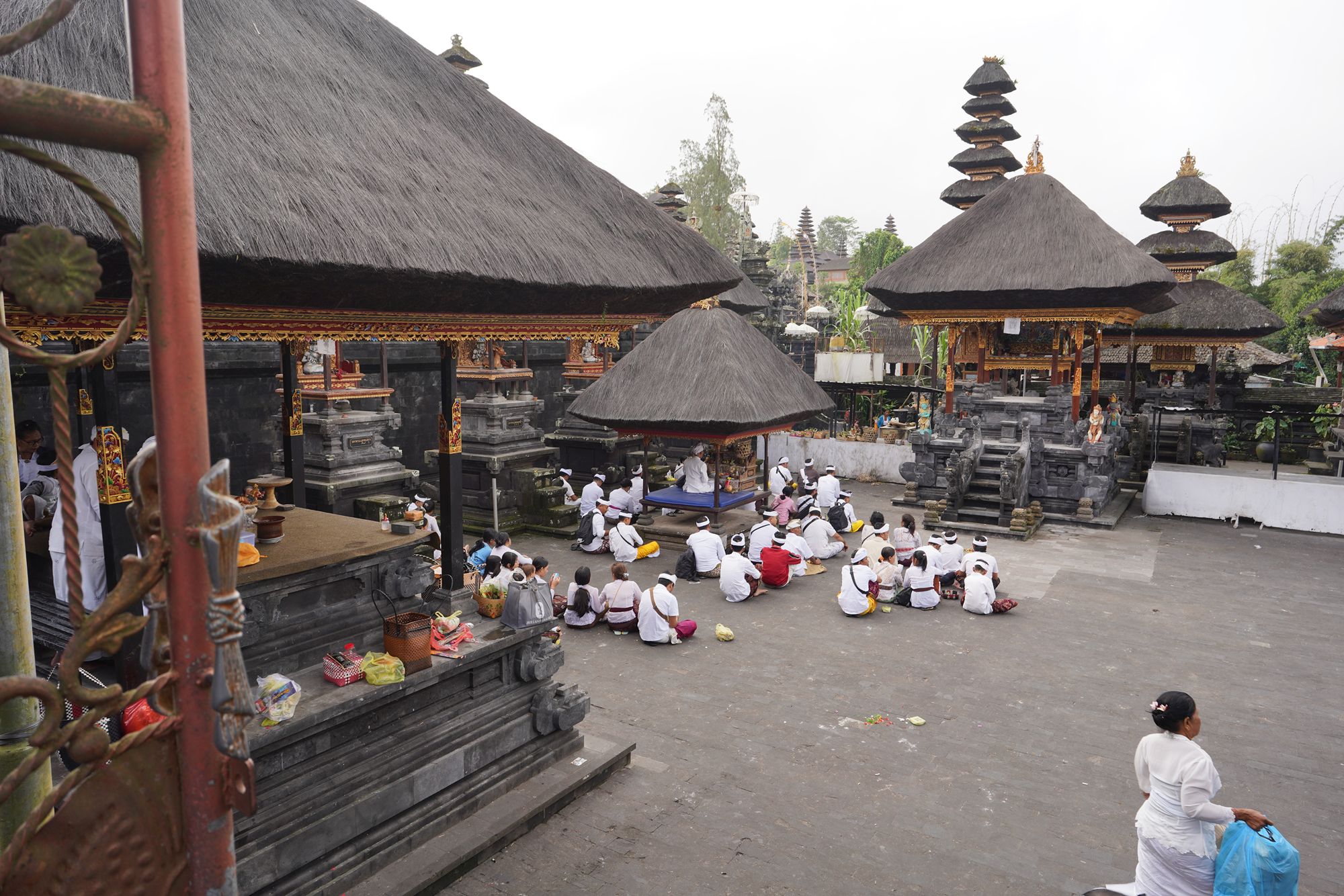


People came to the temple to worship. People dress white for worship

Back side

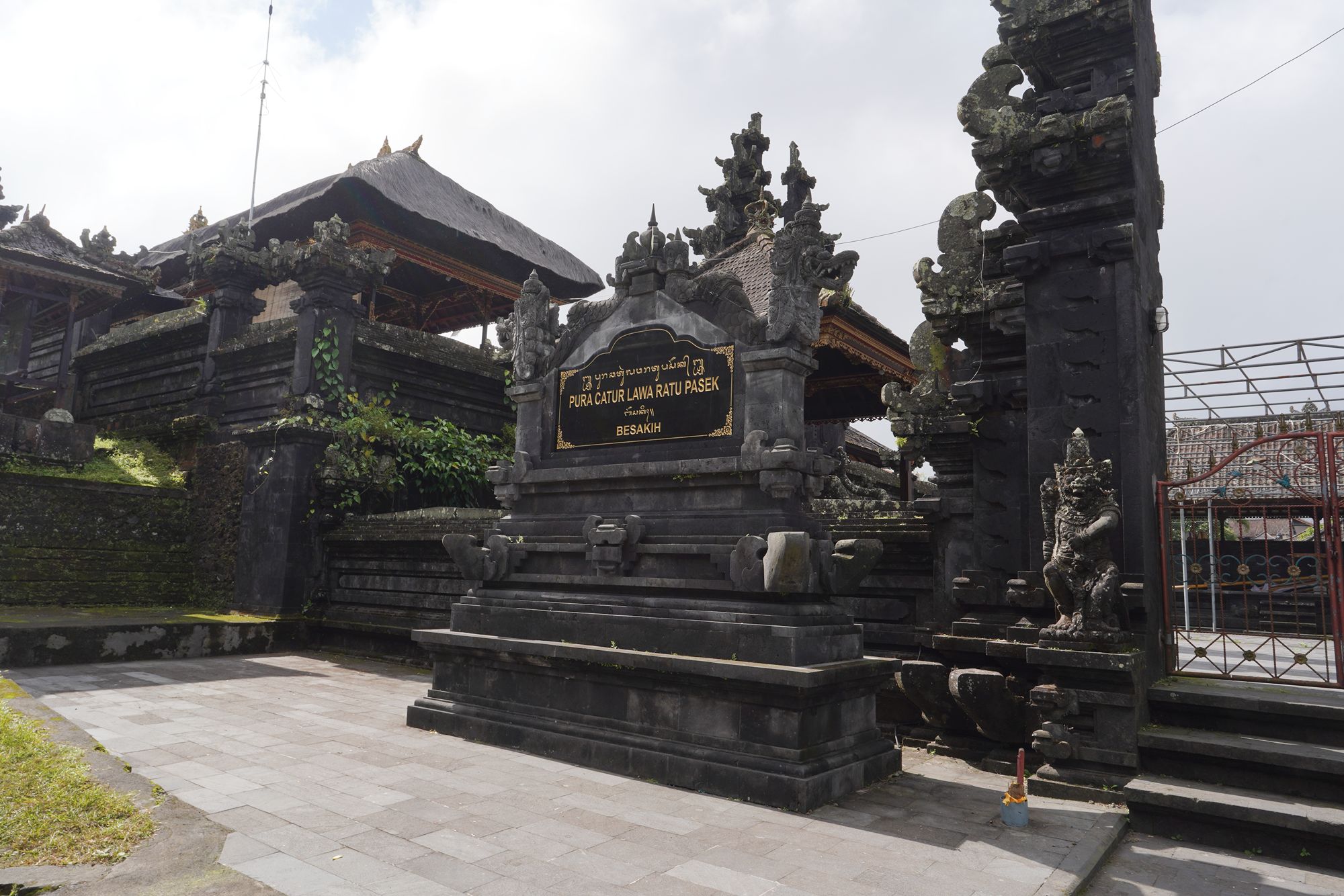

Walked down more

Saw more people came to worship

Back side
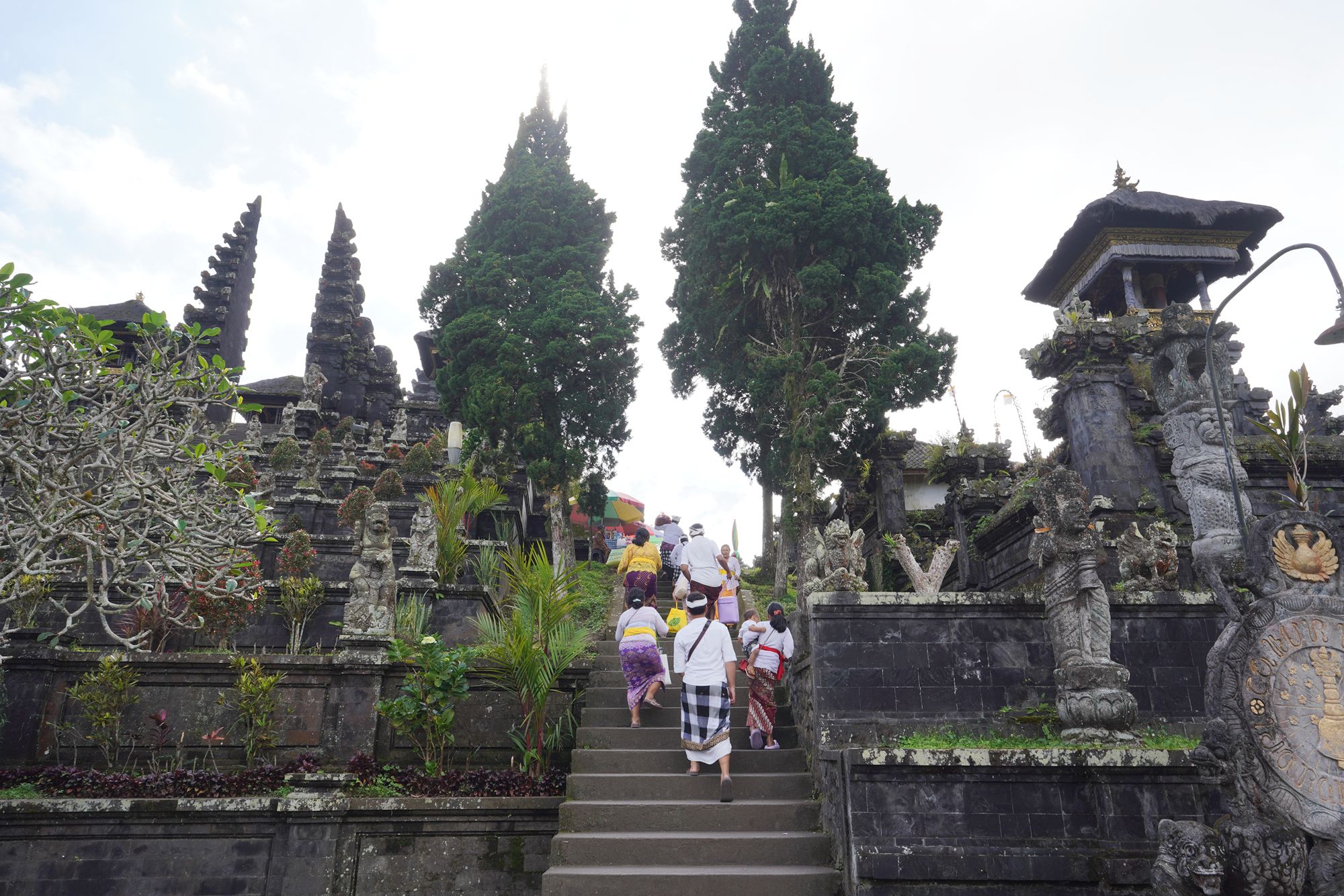
I came back to the front of the temple, where I started climbing up.

I wondered what was after these stairs


This is how it looked after the stairs



I turned around and looked down


and walked down from the temple

Back side



The map of the temple

One of the buildings in town had this design


The next stop was a restaurant for lunch with this view





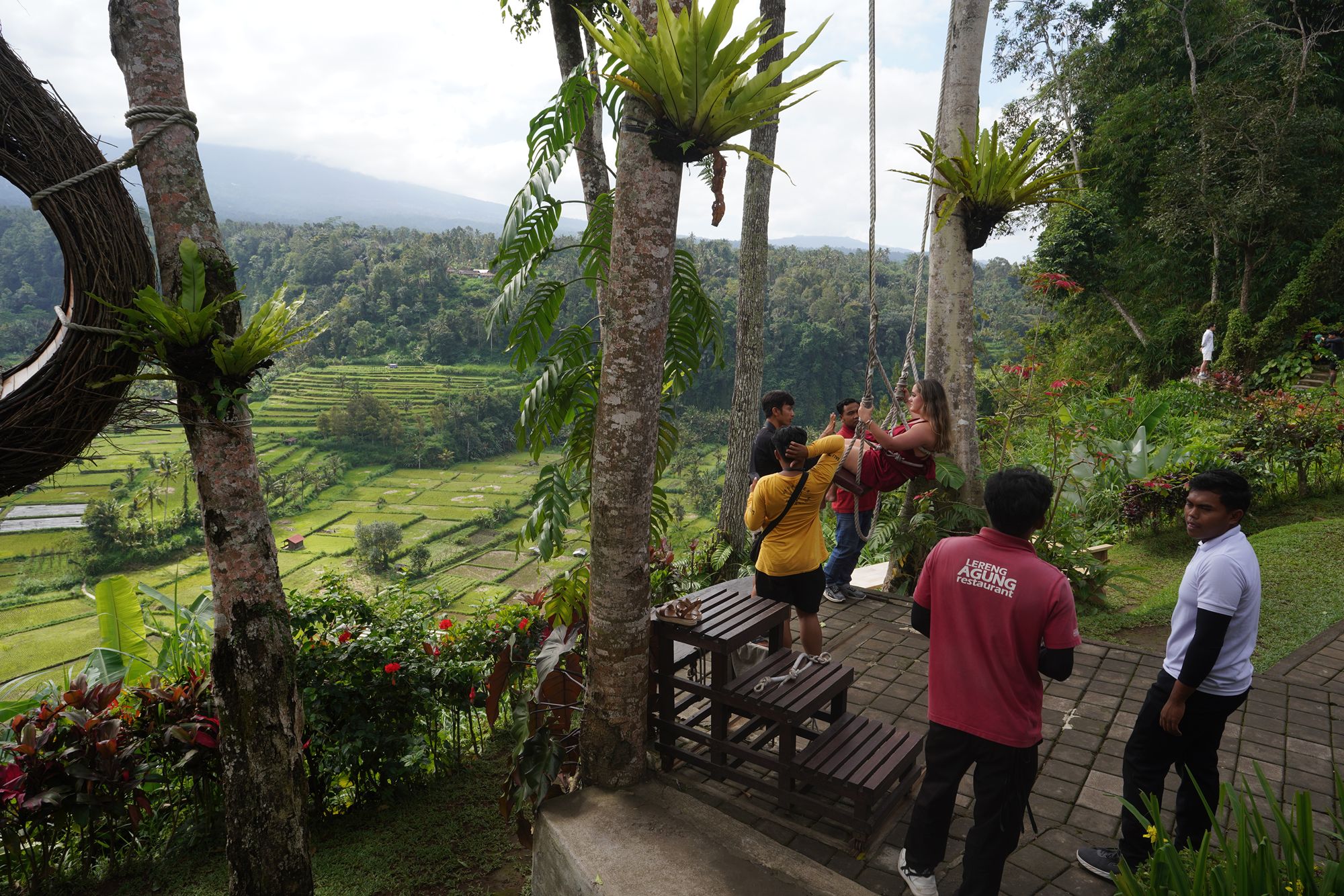

The second temple visited was the Penataran Agung Lempuyang Temple. The most popular reason people visit this temple is to take pictures of themselves with the gate.
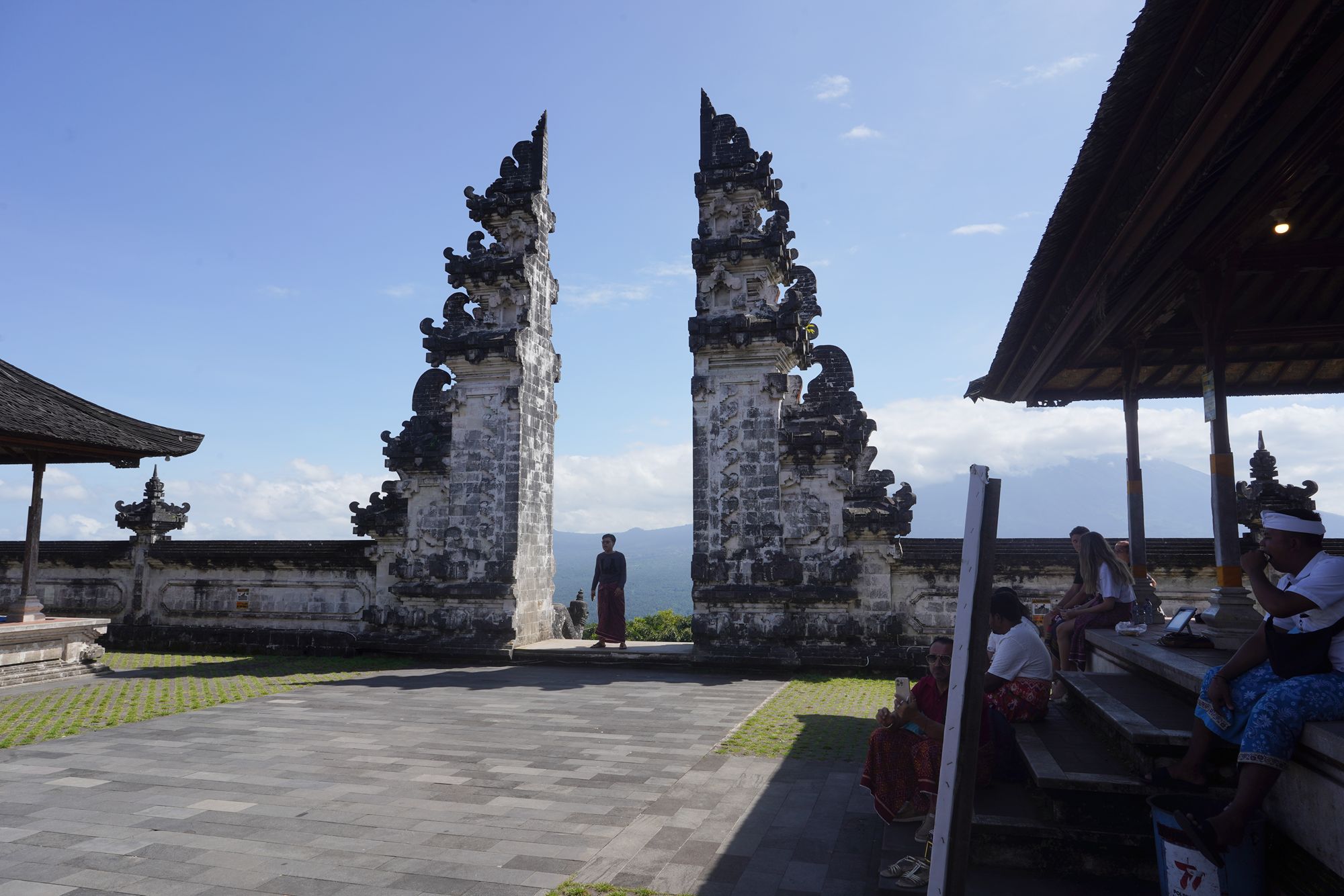
The sited person is the temple photographer, who takes pictures for tourists. This is a permanent fixture of the temple. The people inside the side building await their turn for the picture.
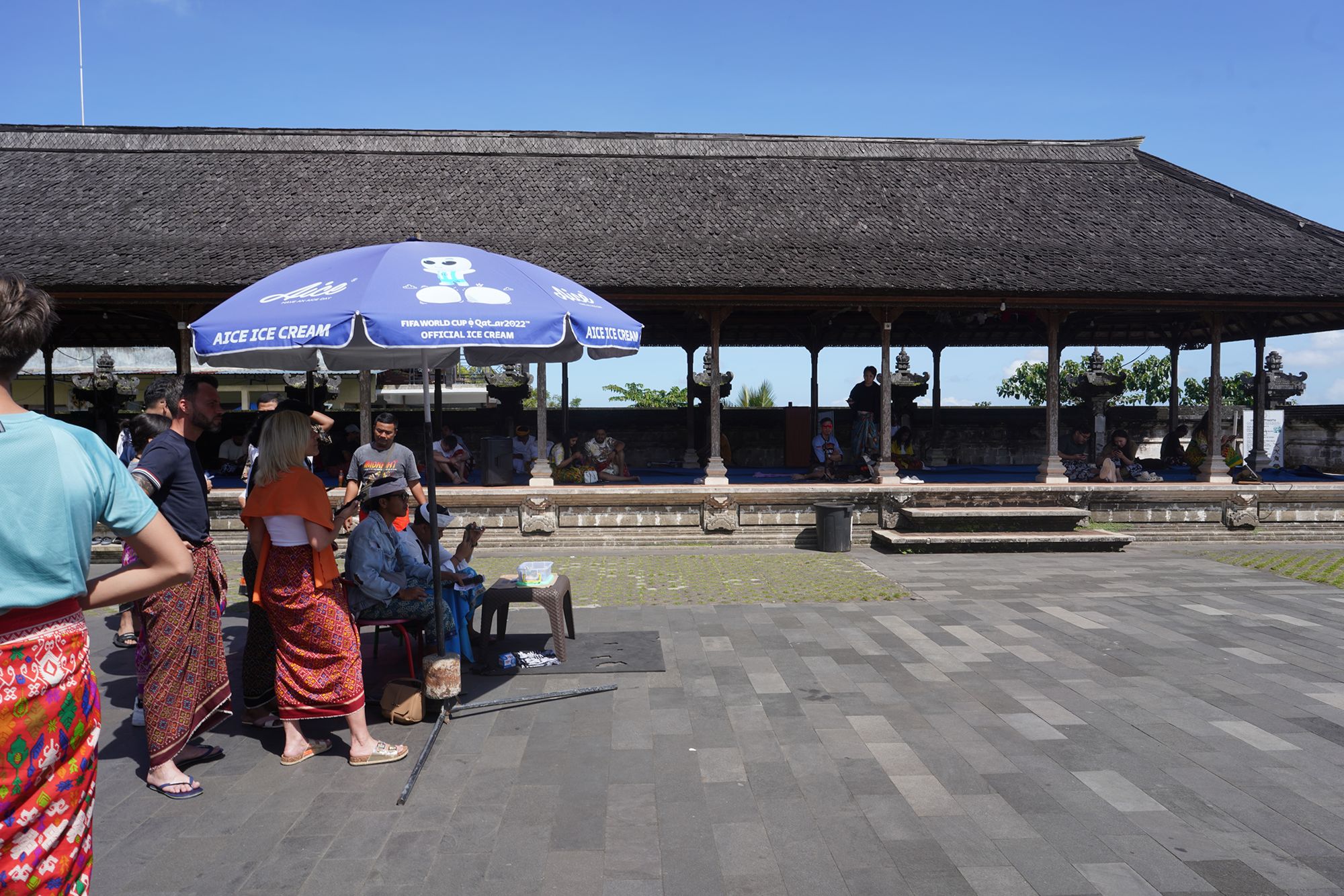
On the opposite side of the gate are the three stairs to the temple’s inside.
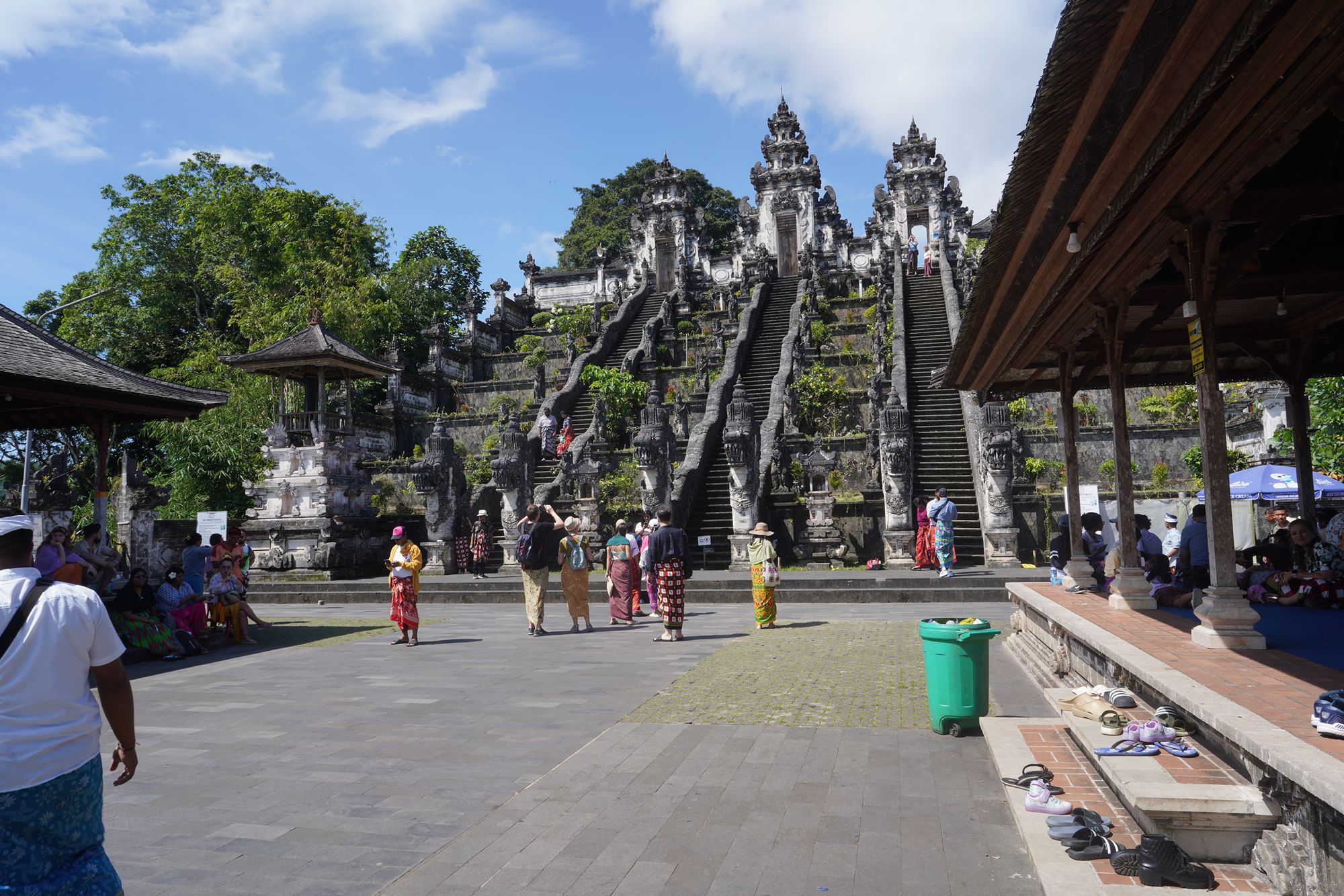
Penataran Agung Lempuyang Temple is deeply rooted in Balinese Hinduism and is dedicated to the god Ida Batara Hyang Gni Jaya, a manifestation of the supreme god Sang Hyang Widi Wasa in his form as the god of fire. The temple is considered one of the key places of worship for those seeking protection, strength, and spiritual purity.



Back side.
The Gateway to Heaven: This split gate, with its towering stone pillars and breathtaking views of Mount Agung in the background, has become one of the most iconic and photographed landmarks in Bali. The gate is symbolic in Balinese Hinduism, representing the division between the material and spiritual worlds. Visitors often take photographs at this spot, especially during sunrise or sunset when the light enhances the beauty of the view.

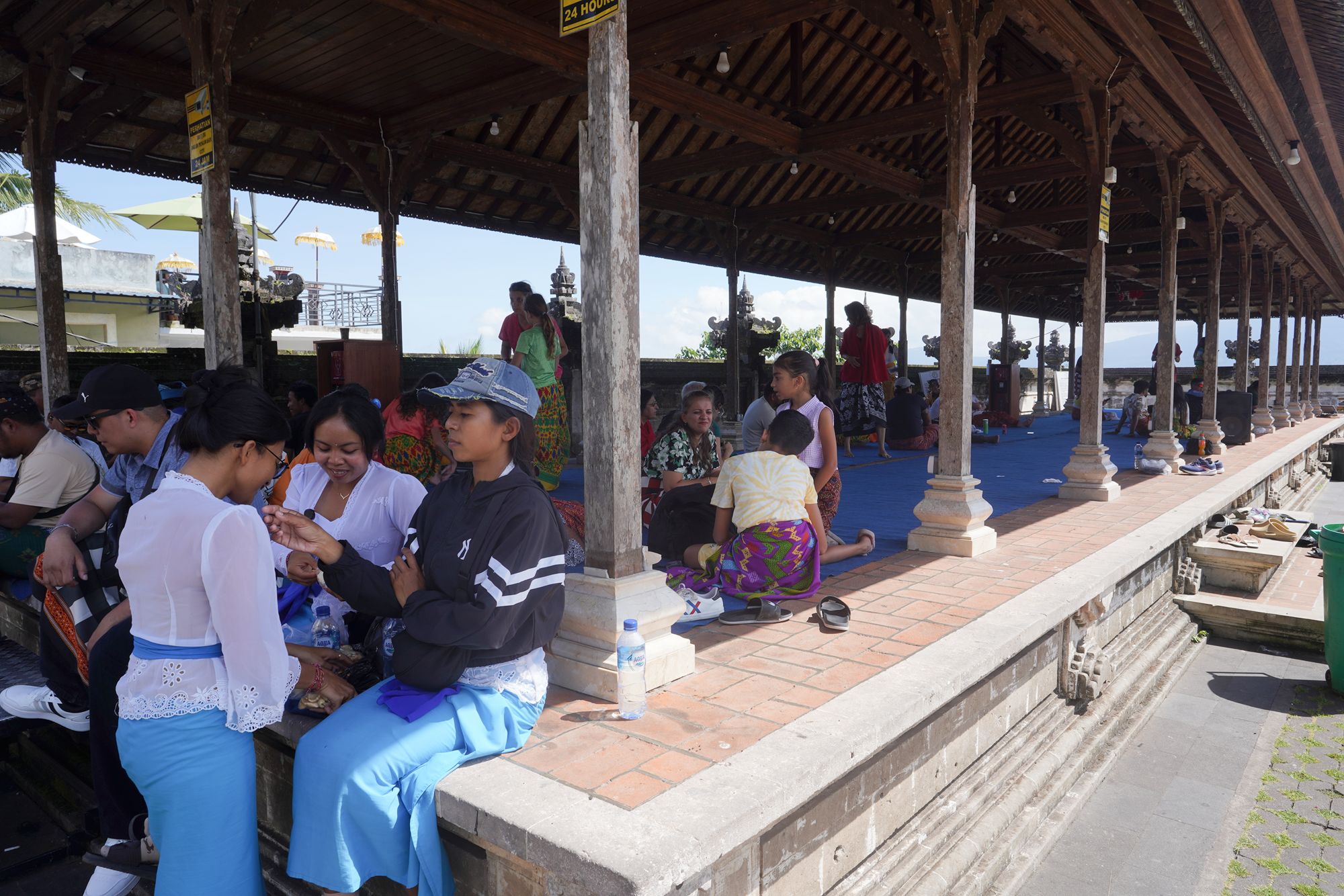
I climbed up the stairs

Looked back down

Inside the gate at the top of the stairs
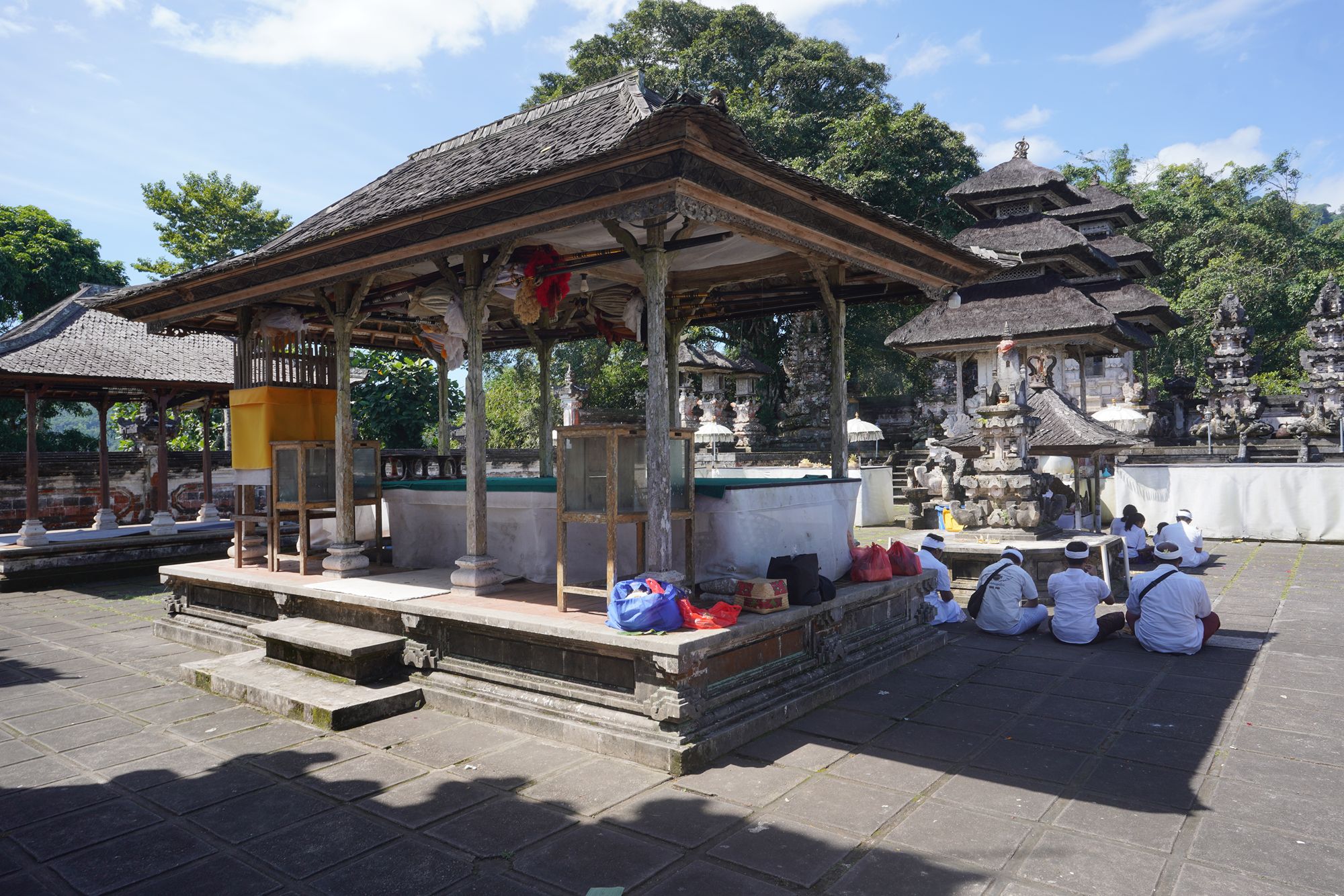

Climbed back down


Out of the temple area and walked down a little bit to the lower level

to this area. This area is the back of the gate (The Gateway to Heaven) where the people took their pictures.


This temple was small, and the sightseeing was short.

The third and last temple was the Tirta Gangga Temple.

Tirta Gangga, often referred to as the Tirta Gangga Water Palace, is a stunning water garden and temple complex located in the eastern part of Bali, near the town of Amlapura. This picturesque site was once the royal palace of the Karangasem Kingdom and is famous for its unique combination of water features, Balinese architecture, and lush tropical gardens.




Tirta Gangga was built in 1948 by Anak Agung Anglurah Ketut Karangasem, the last king of the Karangasem Kingdom. The site was originally a royal palace, but it was designed as a place of worship and spiritual retreat, making use of the region’s natural springs and water sources.

The name Tirta Gangga comes from Tirta, which means “holy water” in Balinese, and Gangga, referring to the sacred Ganges River in India, which is revered in Hinduism. The palace was designed to symbolize the connection between Bali and India, reflecting the deep Hindu influences on Balinese culture.



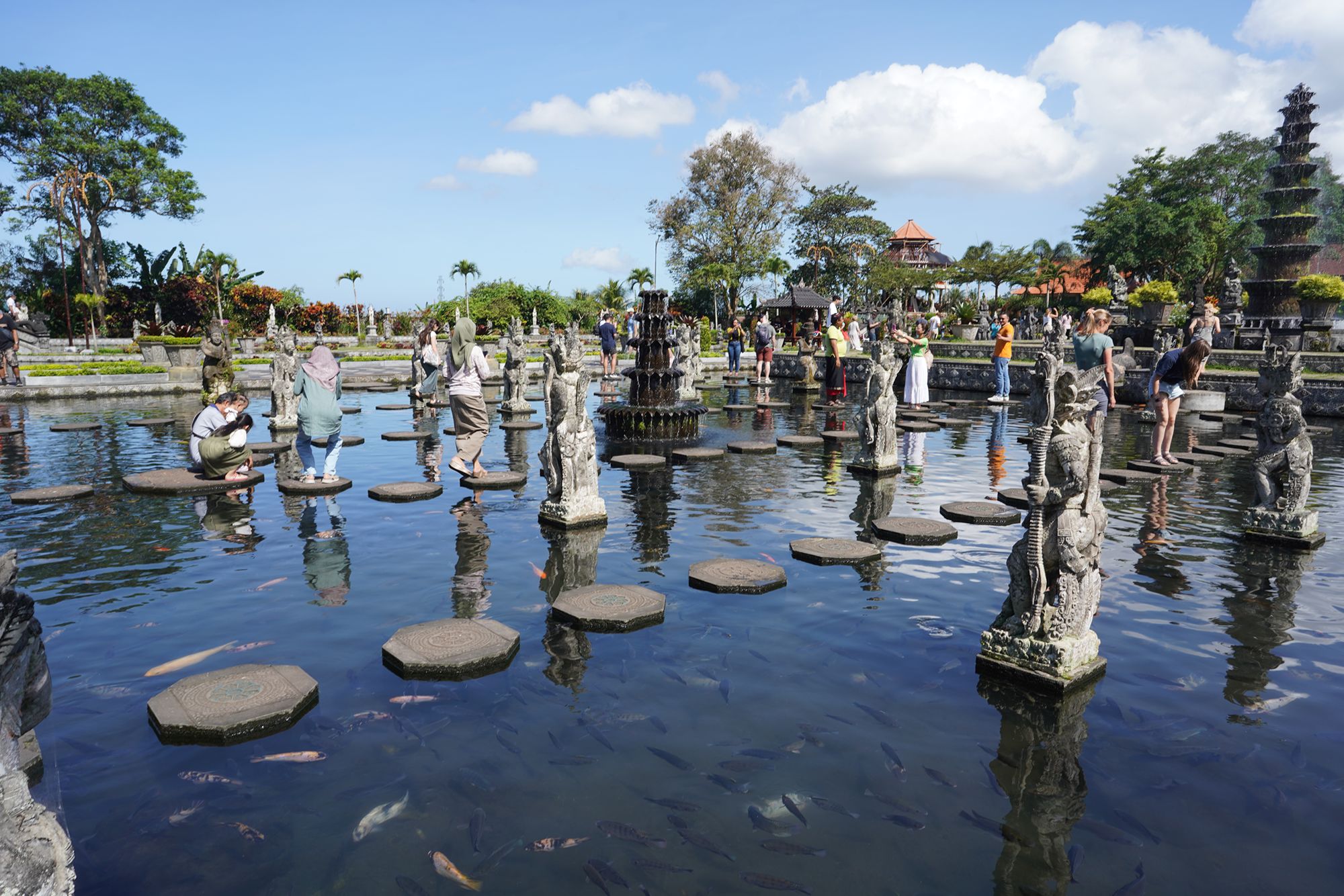







The water in the pools and ponds of Tirta Gangga comes from a nearby sacred spring, which is believed to have healing and purifying properties. The spring feeds into a bathing area where visitors and locals alike can immerse themselves in the holy water. Bathing in the waters of Tirta Gangga is a significant spiritual practice for many Balinese Hindus, who believe it helps cleanse the body and soul.






Back side

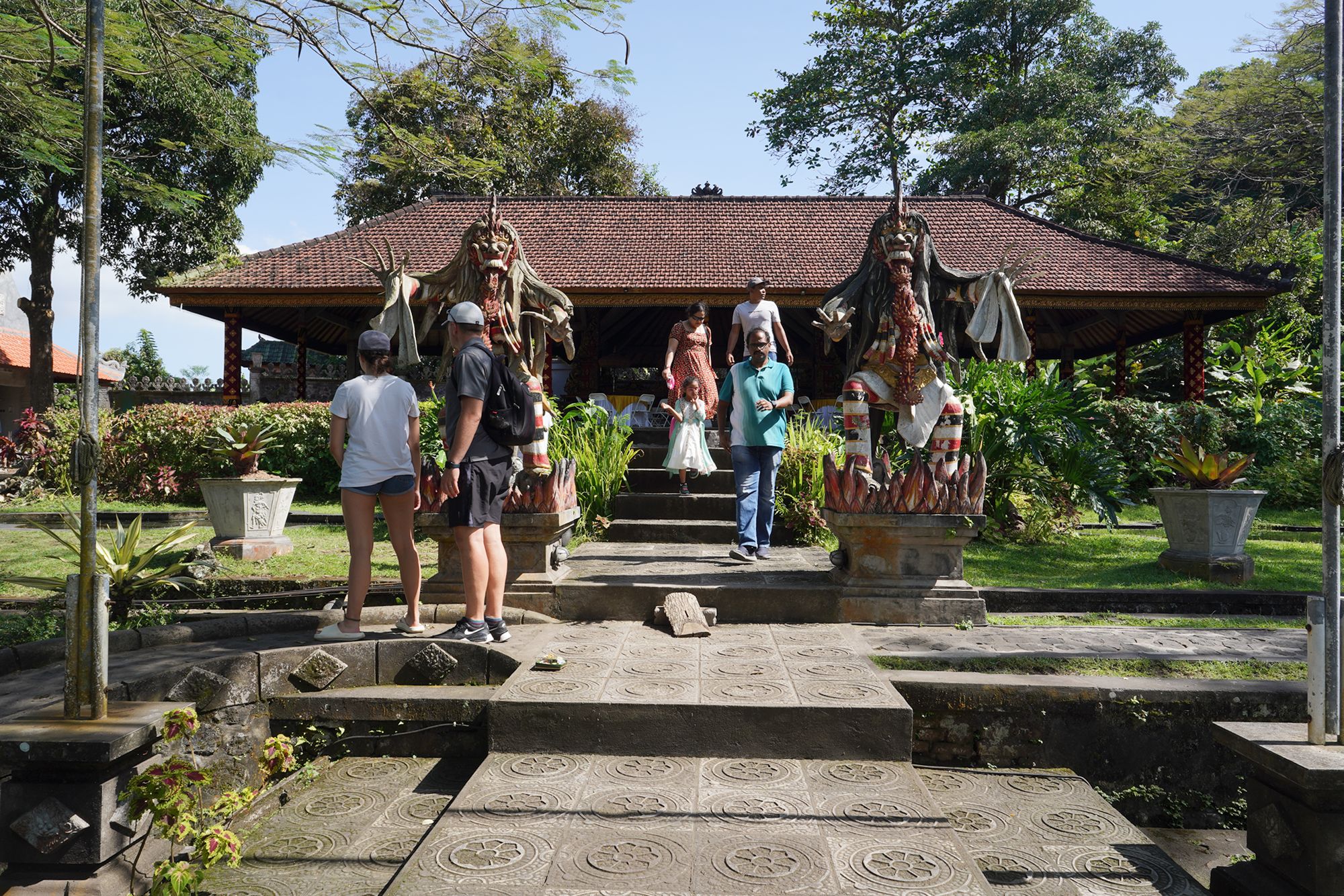
The quiet area is located on the right side of the temple.





In the corner of the pool area is this narrow passage that leads to this area



The door leads to the front of the temple




Came back to the center area
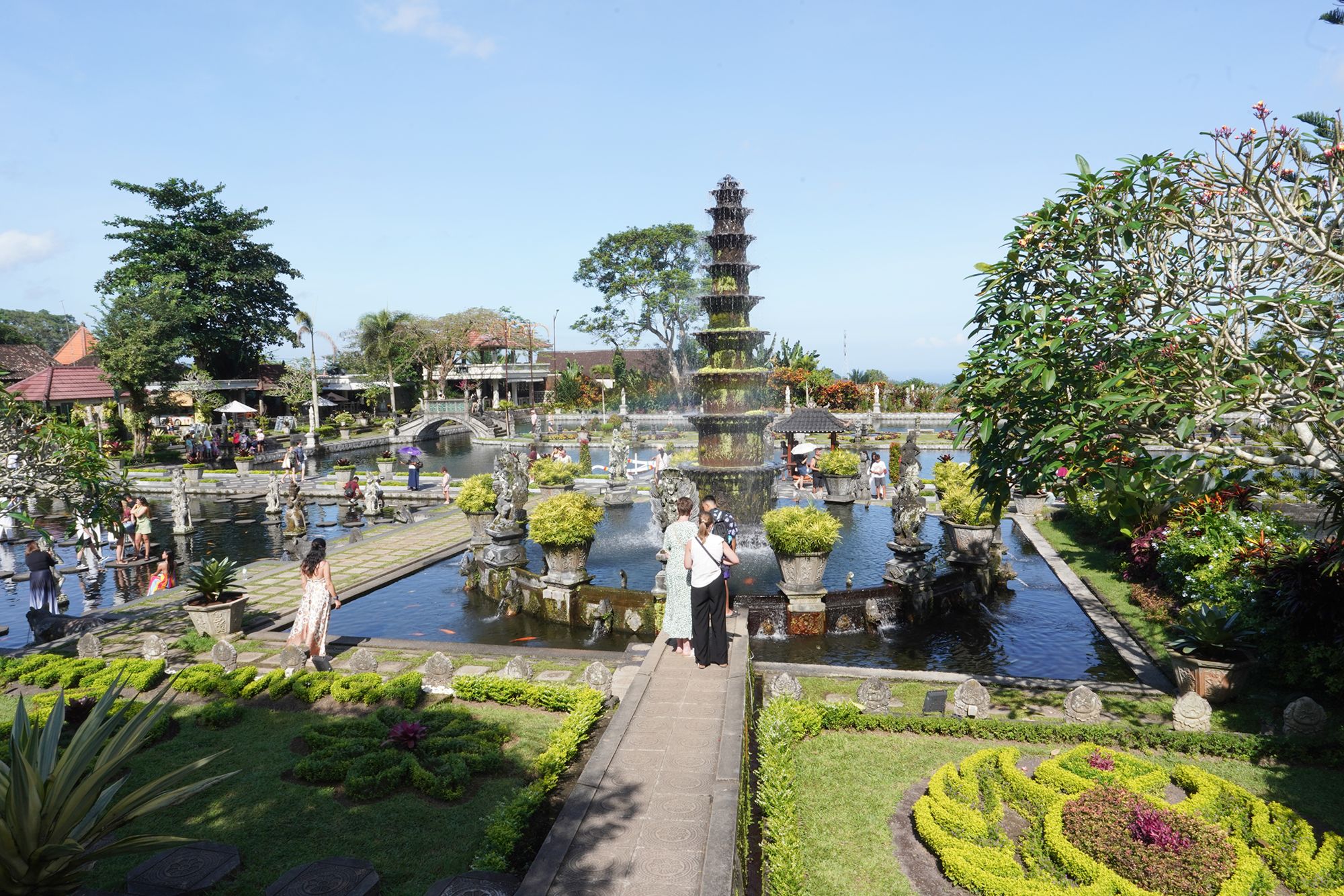


Tirta Gangga’s architecture is a beautiful blend of Balinese and European influences. The use of stone statues, carved guardian figures, and traditional Balinese pavilions (called bale) reflect local styles, while the symmetry and elegance of the water gardens show European design elements.

The left side of the temple has this bridge

The view of the temple from the bridge

Looked straight to the front side from the bridge



The right side of the temple

The front left side of the temple



Exited from the temple
